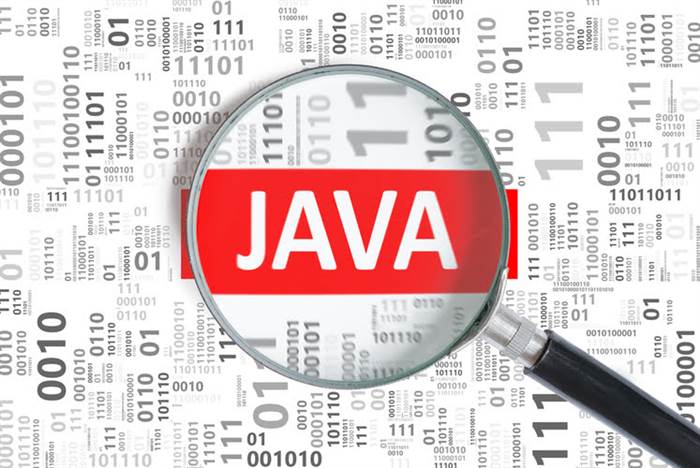Содержание
Highly-secure data encryption is essential for any online business and with cloud computing, it’s all included in the package. Increased security is obtained through payment tokenization and helps organizations achieve global compliance with EMV standards. Advantages in regulation and compliance can be found with cloud computing, as the vendor can choose to completely secure or give partial access to the data in question. Data is secured and backed-up at regular intervals, allowing for access to information as and when needed. Speed to market and scalability are crucial to the success rate of FinTech start-ups, so deliberate research must be faced before doing cloud vs on-premise comparison.

Edge computing is often referred to as “on-premise.” A computing topology in which information processing power, data collection, and delivery are moved closer to the edge of the device. Instead of housing processing power in a cloud or a centralized data center, data processing occurs in multiple small data centers located at or near the source. The main purpose of edge computing is to push the data as close to the actual device as possible, thus reducing traffic and latency.
Data protection is also eased by the relative ease of implementing end-to-end encryption protocols, by comparison to edge computing. On the other hand, cloud computing allows enterprises to scale networking, processing and storage capabilities quickly and easily without disruption or downtime. Edge and cloud computing platforms have data in motion and data at rest encrypted and processed within the approved jurisdiction. Vendors adhering to a shared responsibility model can use edge and cloud computing requirements to ease compliance with global and local regulations.
You can implement it in your business with the help of in house experts or hire a third party service provider. Some of the same containertechnologies that have become important for moving workloads between enterprise systems and the cloud will be employed for distributing computing to edge locations. “Edge computing only replaces public clouds in a world where public clouds were going to otherwise capture all workloads.
Costs
As with any online service, if the internet connection fails on your or the cloud providers side, access to critical data is impossible. Full data recovery can result in a time-consuming process to the system, as you don’t have immediate access to your equipment. The cloud enables organizations to forego Capex in favor of operational expenditures by hosting data in data centers that are run by service providers.
There will always be a market for on-premises applications and infrastructure. How Intellias developed a solution that optimizes financial market data flows and turns them into useful insights. Edge computing technology changes rapidly, so it’s hard to keep track… Goran combines his leadership skills and passion for research, writing, and technology as a Technical Writing Team Lead at phoenixNAP. Working with multiple departments and on various projects, he has developed an extraordinary understanding of cloud and virtualization technology trends and best practices.
Arent We Done With Servers?
The new world order of enterprise IT has heralded an increased adoption of cloud infrastructures. Cloud Computing has grown massively in popularity with its allure and promise to offer newfound flexibility for enterprises in terms of cost-saving, agility, and scalability. However, there are several critical considerations companies should make when deciding which IT infrastructural approach works best between on-premise and cloud models. When it comes to cloud security vs on-premise security, many organizations trust an on-premise environment. With an on-premise environment, data resides within the organization’s own servers, so it offers a high level of security.
Save time – Enterprises can lose time configuring private servers and networks. With cloud infrastructure on demand, they can deploy applications in a fraction of the time and get to market sooner. Make sure you understand all the key differences between cloud vs on-premise software. It’ll make it so much easier for you to figure out which option you should choose. It’ll also help you make the most of your software once you begin using it.
Engagements with our strategic advisers who take a big-picture view of your organization, analyze your challenges, and help you overcome them with comprehensive, cost-effective solutions. So let us help you build a cloud, run workloads at the edge, and create a more secure IT system that totally abstracts the boundaries of space and place. Cloud computing is an act; the act of running workloads in a cloud.

Control is in the hands of your organization, allowing you to pick and choose which data to outsource to a third-party vendor and what data to keep on-premises, offering greater data security. Due to its in-house location, on-premises systems https://globalcloudteam.com/ are more susceptible to data loss during disaster situations. If not regularly backed-up, there are no recovery guarantees and the time it takes to recover data can put a serious delay in the day-to-day running of your business.
Cloud, Edge, And 5g
There’s a fast-growing ecosystem of alternatives, with the HPE GreenLake edge-to-cloud platform pioneering in this area. With these solutions and services, companies can choose to keep some of their applications and data in the public cloud and maintain others at the edge using infrastructure they don’t need to own or maintain. ComplianceMost technology-driven companies nowadays operate under some form of regulatory supervision and control, regardless of the industry.
Cloud deployment is the process of deploying a software application through different cloud computing service models, such as software as a service , platform as a service , or infrastructure as a service . “There’s a natural hierarchy of applications,” explains Drobot, referring to the way companies can benefit from combining cloud and edge in a single data management system. Sure enough, about70 percent of companies’ applications and data remain firmly on the ground—on premises, sitting in enterprise data centers. Access and ControlBusiness data, hardware and software platforms are all yours.
Cloud Vs On
Limitless compute on demand – Cloud services can react and adapt to changing demands instantly by automatically provisioning and deprovisioning resources. This can lower costs and increase the overall efficiency of organizations. Outside of enjoying these advantages, you’ll also come to appreciate the fact that you can access on-premise software without having to use the internet. This will really come in handy if you ever lose the internet connection in your office. Some companies have started to move away from on-premise software thanks to the convenience of cloud software. But you might still want to consider using on-premise vs cloud software in certain situations.
When you’re migrating from on-premise to the cloud, you can either choose to move your data and application offline or online. The offline approach is more expensive than online migration because you need to buy or rent several storage devices, and you also have to bear the costs of relocating them. When determining cost of on-premise vs. cloud infrastructure, you also must factor in the cost of the premises themselves. With on-premises, the organization also has to bear the ongoing costs of space, server hardware, and power consumption. All of these costs are bundled into one monthly fee for cloud space. When it comes to cloud vs on-premise cost, the cloud is generally cheaper.
- Restoring cloud backups is quick and prevents enterprises from disastrous losses.
- As of deployment, the process is easy and takes no time compared to in-house software deployment.
- It all depends on how you decide to incorporate software into your business operations.
- “There’s a natural hierarchy of applications,” explains Drobot, referring to the way companies can benefit from combining cloud and edge in a single data management system.
- Edge computingcan help lower dependence on the cloud and improve the speed of data processing as a result.
- Deciding between either deployment model is a complex process, wherein several factors come into consideration.
Cloud computing faces the likelihood of higher latency in contrast to edge computing as data has to travel to and from a cloud server. Additionally, since data has to move through the Internet, it risks the possibility of interception by threat actors. Cloud computing often offers greater reliability than edge computing.
Edge Computing Vs On Premises?
Both need regular investment, but one option is light years ahead when it comes to the ability for companies to scale and compete with larger financial institutions, which is the cloud platform. That’s probably is the main difference between on-premise and cloud. A crucial point in cloud computing vs on-premise cost comparison is What is edge computing an initial investment in hardware and infrastructure. Not to mention the ongoing costs of maintenance, storage space, power consumption and dedicated IT support. Infrastructure also requires regular, large investment to stay up to date. If we talk about cloud vs on-premise pros and cons, we must mention issues with the internet.
In a cloud environment, everything, and I mean everything, is done by the service provider. Every process related to deployment, maintenance, and support is done by the cloud provider’s IT team. As of deployment, the process is easy and takes no time compared to in-house software deployment.
In turn, this spells better longevity since maintenance is catered for by a third party. However, the pricing typically adjusts depending on how much is consumed. As such, on-premise software is installed on the enterprise’s own servers and behind its firewall.
Best Antivirus Software For Servers In 2022 + Is Paying For Server Antivirus Worth It?
The use of both edge and cloud computing will continue to open up further avenues for revenues while growing verticals like Industry 4.0. The pricing models offered by some of the top providers depend on the usage and configuration of the solutions. One of the biggest advantages of cloud computing services is their instant provisioning.
Unfortunately, many organizations are still confused when choosing the best infrastructural approach to their business while factoring in security, cost, and hardware. Today’s article unpacks the on-premise vs cloud debate to help create a foundation for any corporate decision-making relating to the two. In an on-premise setup, everything is hosted in an organization’s on-premise environment, and resources are deployed within the company’s IT infrastructure. Maintaining the servers, software, and all the related components is the responsibility of the organization. In contrast, withdistributed cloud, you can continue to use multicloud environments and access resources no matter where they’re located — all within a single control plane on one cloud. If you use the latest versioning on IBM Cloud — which some of your other cloud providers don’t support — it may results in inconsistencies that your ops team will struggle to handle.
Distributing navigation software updates to vehicles overnight, as Tesla and others already do, is a fine application for cloud computing. But edge computing, when used as part of manufacturing, mining, processing, or shipping operations rarely exists without IoT. An on-premise private cloud, also called an internal private cloud, is hosted and managed within the organization’s premises. All the IT infrastructure, cloud servers, and computing resources are located in the physical office of the organization. In an on-premise cloud, a company manages and maintains the cloud computing equipment by itself, which allows for more control over data.
